A theatre pro and a game designer break all the rules, put the audience in the driver’s seat, and change how we experience live theatre.
By Justin White | April 11, 2019
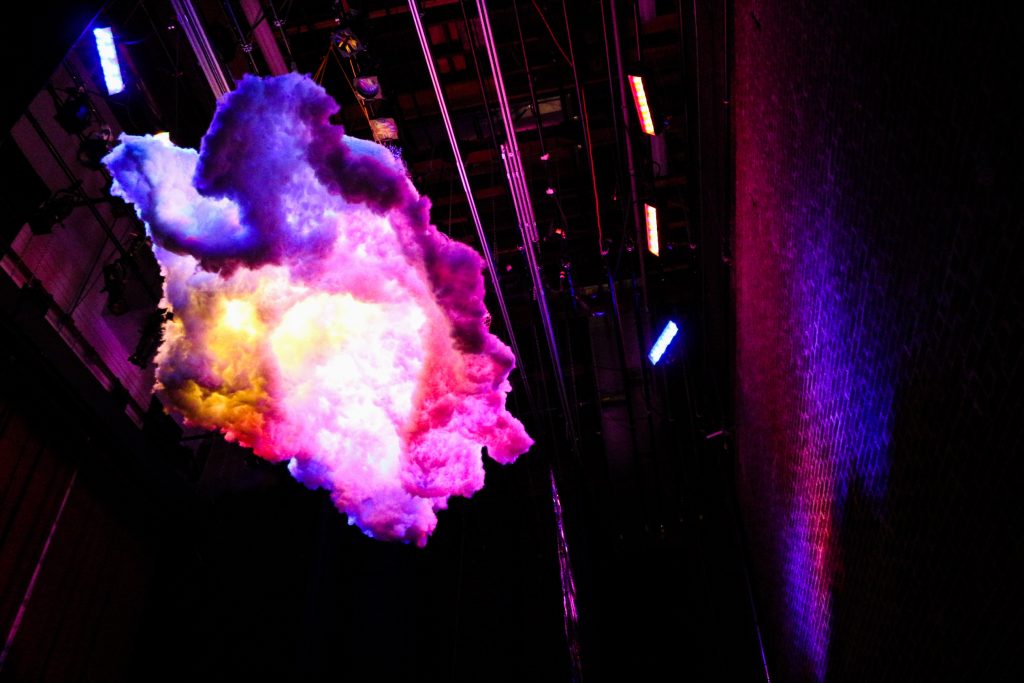
The mysterious “Gloaming”, stunningly executed, is unsettling in its out-of-placeness hidden down one of Murder!’s clue trails. Created by scenic designer Elizabeth Jarrett with lighting design by Mateo Morris.
Murder isn’t often a uniting force, but for the innovative minds behind the smash interactive whodunnit Murder! At the Strand, now returning for the second year in a row to Marietta’s historic Strand Theatre, it proved to be exactly the thing to bring them back together.
In 2018, Corey Bradberry and Jeremy Ledbetter created the runaway success Murder! at The Strand, a show that was part theatre and part real life video game. With Bradberry writing and directing and Ledbetter as game designer, it used the entire historic Strand Theatre as its stage, placing actors in the roles of ushers, bartenders, and ultimately murder suspects when its ‘play within a play’ is interrupted by an untimely death. Patrons then spent the remaining time interviewing the actors, following clue trails, and solving puzzles, becoming part of the production itself by taking on the role of investigator. It was unlike any theatrical performance seen before.
It was experimental, it was avant-garde, it was a completely unorthodox way of doing theatre — and audiences loved it.
It sold out its entire run before the first weekend closed, clinched an extended run two months later, and the pair got signed on to produce a new show in the Murder! franchise: Dark Matters, a science-experiment-gone-wrong inter-dimensional twist on the murder mystery genre debuting April 2019.
According to Bradberry, part of the reason for all that success? Accessibility.
“Murder! is intentionally meant not just for theater people, not just for escape room enthusiasts, not just for murder mystery enthusiasts, but for everyone,” says Bradberry. “We found that our audience from 2018, from both the original and the remount productions, were coming from all over — first time theater goers, long time Strand attendees that had never gone to a play quite like this before — and so we tried to create this with really big open arms for anyone who might be interested in diving into a stranger world than what they might be used to.”
Murder! at The Strand started as an idea that Bradberry says former Strand General Manager, Cassi Costoulas, brought to the duo back in the summer of 2017.
“Jeremy and I sat down in a meeting with Cassi and she asked us, ‘What would it take to create a play where somebody is murdered part of the way through it?’”
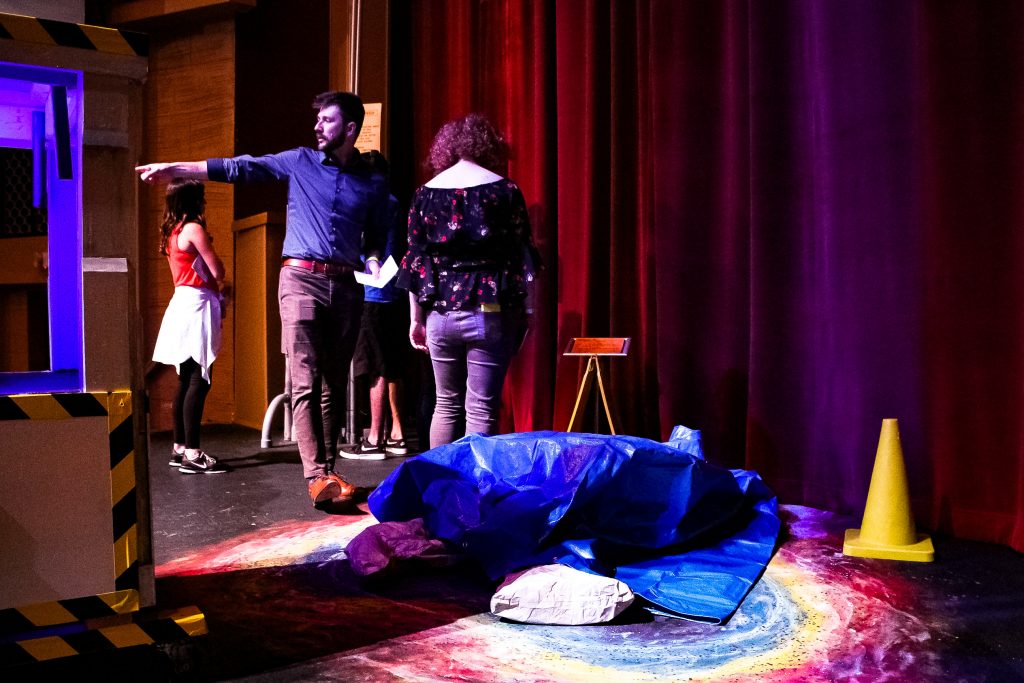
Murder! at The Strand II: Dark Matters | April 11-21, 2019
From that original meeting came a nine month period of work that led to the first Murder!. When Costoulas tapped current GM Andy Gaines as her successor, he picked up right where she left off and saw the project through to opening night.
Bradberry says its gratifying to have that kind of support when trying something new, especially as an artist. “We’re so grateful that The Strand has invested it’s time and resources in the nurturing of this new idea,” Bradberry says. “If you do invest in people and resources and ideas, that those things can gestate and turn into fun, new events. I think now we’re only scratching the surface of what’s possible with this.”
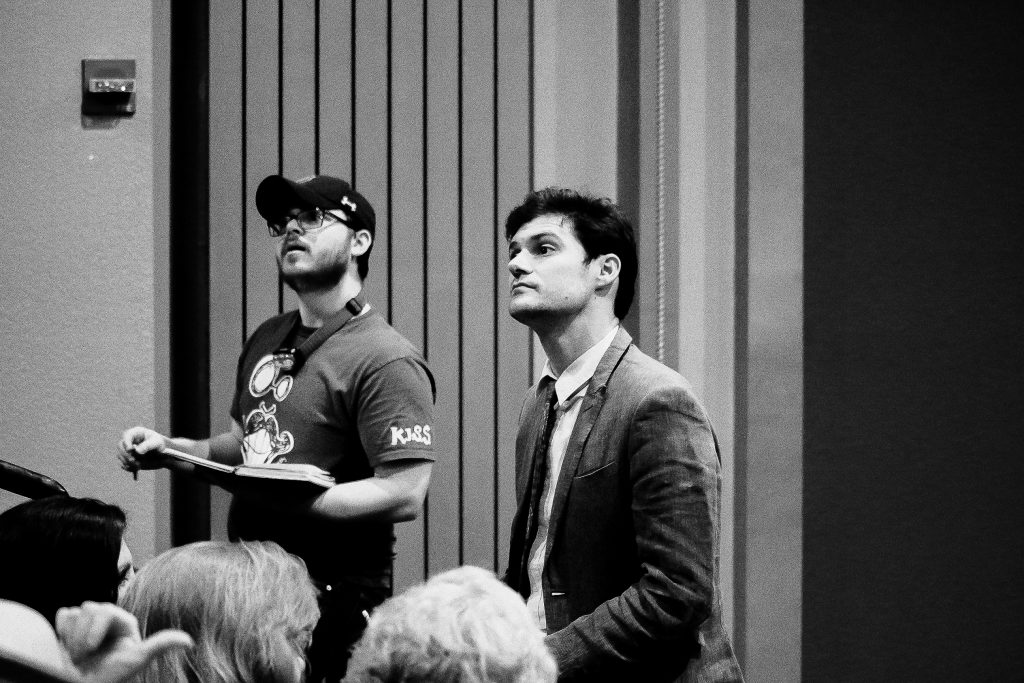
Jeremy Ledbetter (left) and Corey Bradberry (right) conduct a feedback session after a Murder! at The Strand II: Dark Matters preview night.
At first glance, the two minds behind the theatre experiment that became a killer success can present as something of an odd couple.
Bradberry is a Chicago based, Atlanta born playwright and director with a Masters of Fine Arts in directing. Ledbetter is a professional virtual reality developer with a long history of game development and escape room design.
Dig a little deeper, though, and you’ll find that Bradberry has a history of taking on experimental theatre projects, and Ledbetter started out acting professionally before taking his passion for storytelling interactive. Ultimately, they’ll both tell you that even though they live in different worlds, they aim to deliver the same thing: a good story, well told.
Turns out, combining their two worlds does more than tell a good story — it changes how we think about telling them in the first place.
Read on for Bradberry and Ledbetter’s thoughts on the place interaction has in traditional theatre, the challenges in trying to capture lighting in a bottle (twice), and what makes Murder! unlike anything else.
The interview is edited for length and clarity.
JUSTIN WHITE: Before we dive in, let’s talk about the new show for a moment. Give me the elevator pitch for Dark Matters.
COREY BRADBERRY: Dark Matters is about a science experiment gone horribly wrong. A world-renowned scientist, Dr. Helen Wilson, and her team have invented a renewable energy device, except during a last minute stress test something went wrong and ended up in the disappearance of Dr. Wilson and the death — and potentially the murder — of one her colleagues. And so the audience’s role as investigators is to sort of come in and piece together the scenarios, the witnesses, the motives, and ultimately decide who is guilty and who isn’t.
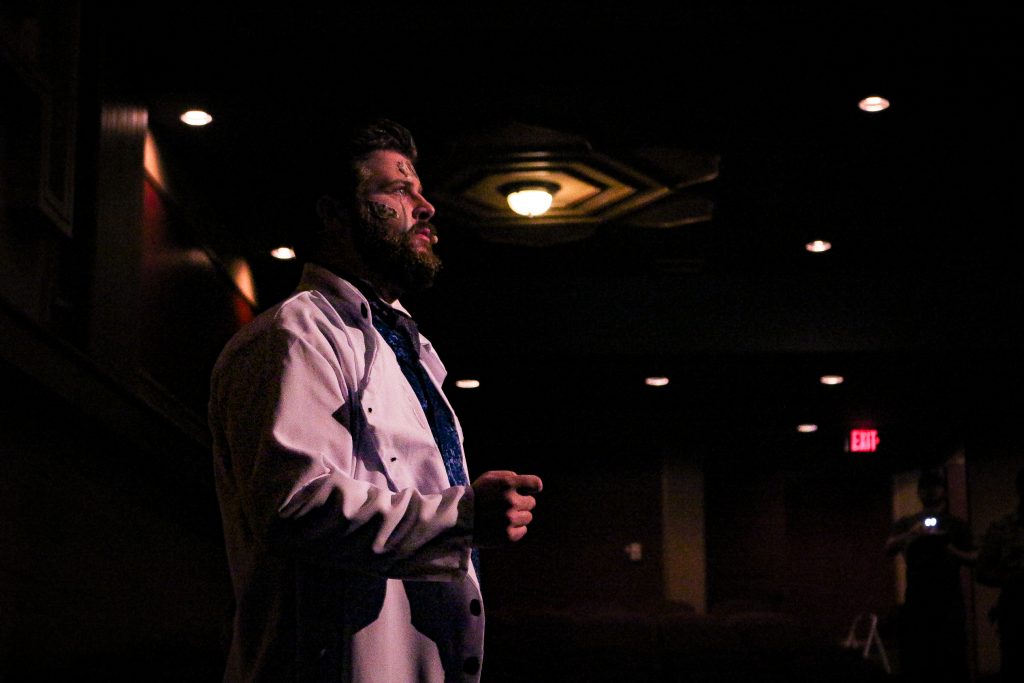
Murder! at The Strand II: Dark Matters | April 11-21, 2019
WHITE: What influences helped you bring this idea to fruition?
BRADBERRY: Teaming up with Jeremy has been a lot of fun because our influences for the Murder! series have come from so many different places. Of course you have the murder mystery — Agatha Christie, Sherlock Holmes — but then also video games, escape rooms, all sorts of theater genres, and we really view this, even though I see it as primarily a play, as a hybrid of a lot of different types of storytelling.
JEREMY LEDBETTER: There were a lot of big concepts we wanted to fuse into this thing, so with Dark Matters we took the opportunity to explore bigger ideas and go a little bit deeper than we did with Murder! I. We talked about doing a ghost story, we talked about doing science fiction stuff and then somehow we stumbled upon the idea of doing a World’s Fair kind of technology showcase. And from that point, it evolved into something less classically World’s Fair and into a more relevant talk about the growth of technology and corporate dominion and what that looks like in our lives. How entities that aren’t people can still have a personal, people-like effect on us.
WHITE: Are there any storytelling tropes or trappings with a story like this, an experience like this that you take pains to avoid? Or that you try to include?
BRADBERRY: Last year, with the initial murder mystery, that was like a straight up whodunit. We leaned into a lot of those tropes, and stereotypes — we really leaned into the sort of campy, fun elements of that. One of the things that we’re interested in this year is getting away from some of those tropes, and leaning more into the mystery and the Sherlock Holmes idea of peeling back layers of a story. And I think that also helps us keep any tropes that we might be considering fresh because it’s being delivered in a very, very different way.
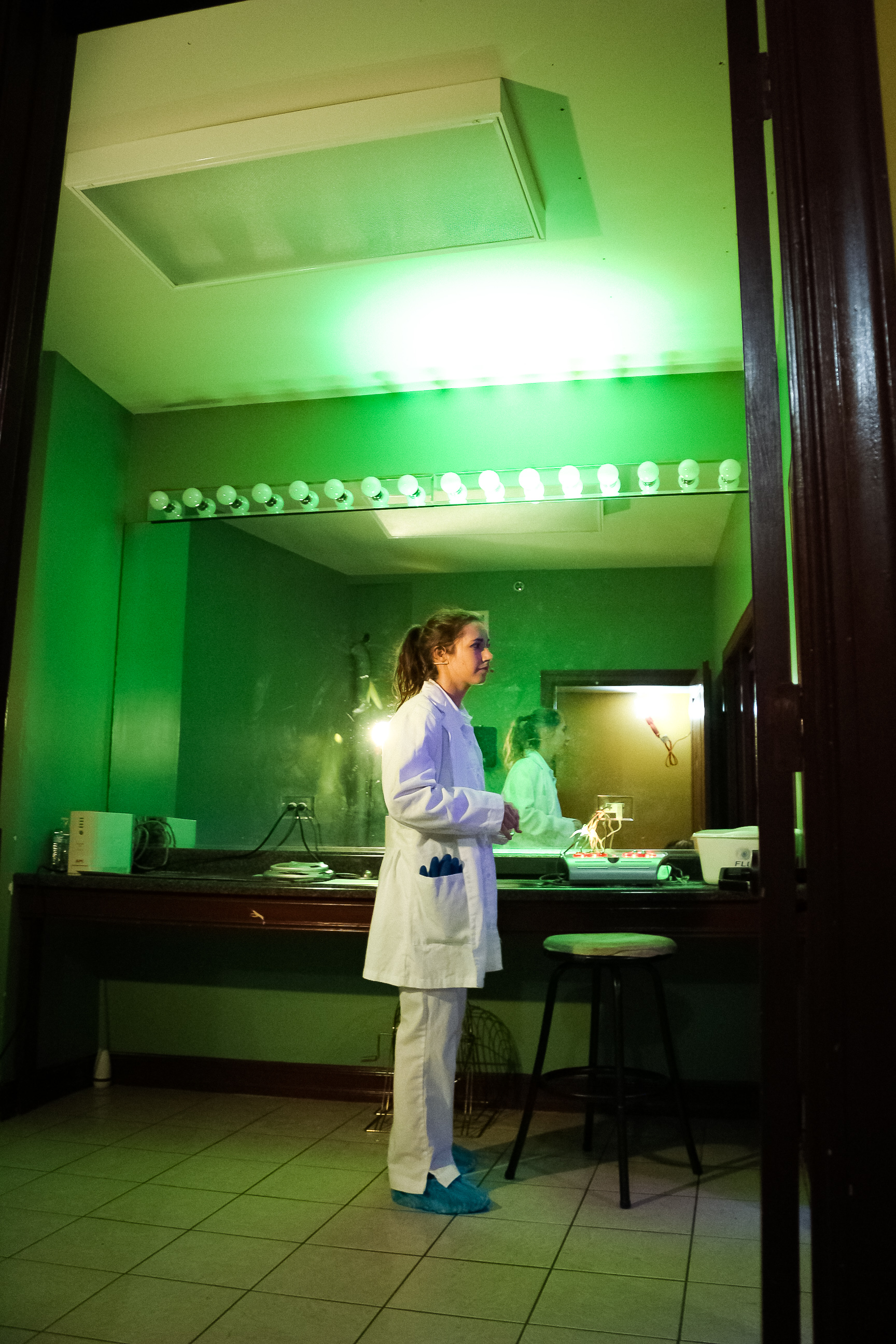
But you’re still dealing with murder, and betrayal, and intrigue, and all of the stuff that makes drama so much fun
LEDBETTER: It was important to make sure, especially because we are telling a story with a lot of concepts of science, that we weren’t telling a story that berates or denigrates science.
We see a lot of science fiction about evil scientists doing terrible, unethical things — and there are bad people who do bad things in our show — but the actual concept of the technology that we’re working with isn’t nefarious. We didn’t want to explicitly make you know, the Jurassic Park, “Look at what the scientists did. They made dinosaurs that are killing people.” We wanted to avoid that trope in particular, because knowledge is power and we don’t want to undercut that message.
WHITE: Jeremy, what about your skill set with escape rooms and game design carries over into this kind of theater work?
LEDBETTER: The great thing about games is that it gives people a way of feeling like experts in a skillset that they don’t have. So, we’re inviting people to step into The Strand as ‘special investigators’ who are looking for very specific information. They can kind of role play as this person, and part of my job is to give them opportunities where they get to feel like they are doing real investigative work, they’re interfacing with a piece of technology in a way that’s novel or fun or unexpected.
I’m used to using clues and the environment as means of storytelling, but with this I have the luxury of having real actors playing real characters. It really elevates it to place that you really don’t get in an escape room or video game.
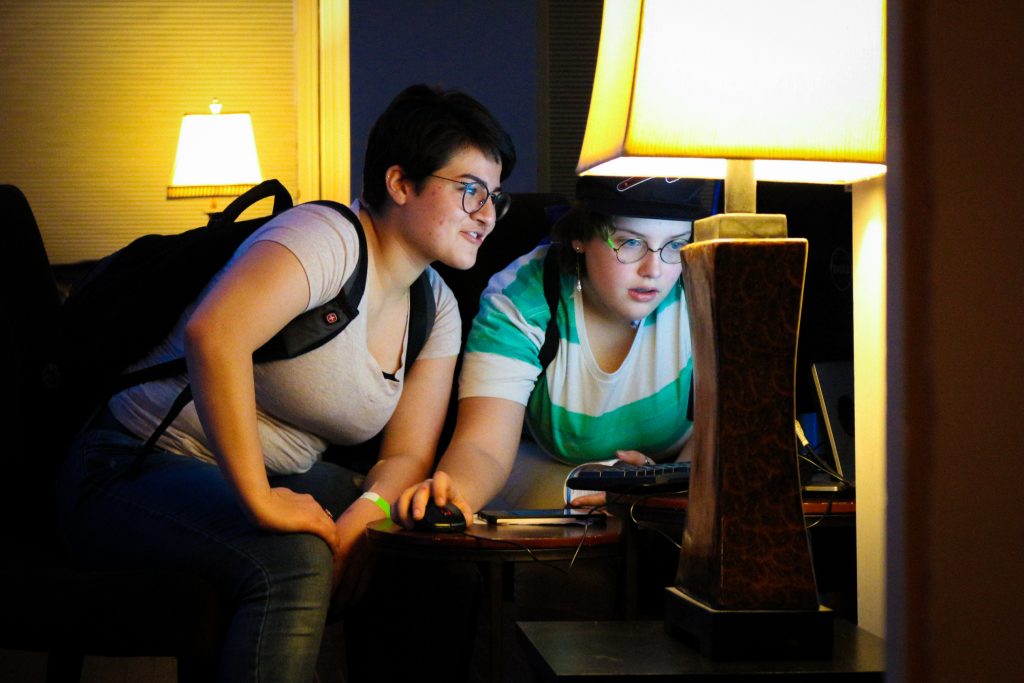
Murder! at The Strand II: Dark Matters | April 11-21, 2019
WHITE: How do you guys approach handling difficulty, specifically matching the depth of your story with say, someone who really never had experienced this kind of thing before?
BRADBERRY: That is one of the big challenges. Part of the difficulty is that it’s not like a TV show, you can’t go back and rewatch a moment. People have to be able to make a decision in the moment so they’re not wasting their time worrying about things that are ultimately not going to help or not going to solve the murder. We tried to create a vessel that is like a water slide almost: there’s still only one way to go down but it depends on how fast you jump into the water.
LEDBETTER: That’s a great way to put it, Corey. What we try to do when we’re talking about the interactive elements of the show is limit the ways in which you can interact with any specific beat of the story. So if we have an interactive element or a puzzle that you need to solve, we want to get the tools that you need to solve it in front of your face as clear as possible as quickly as we can. It’s not about creating hard experiences, it’s about creating experiences that make you feel like there’s a revelation at the end of it.
BRADBERRY: Yeah, Jeremy’s right on it. It’s about making sure that people are having a great time with how they’re getting the information. One of the audience’s favorite puzzles last year was really just how to put props back onto a prop table, but the simple act of going through those really fun memory games and object puzzles were some of the favorite things that the audience ended up doing.
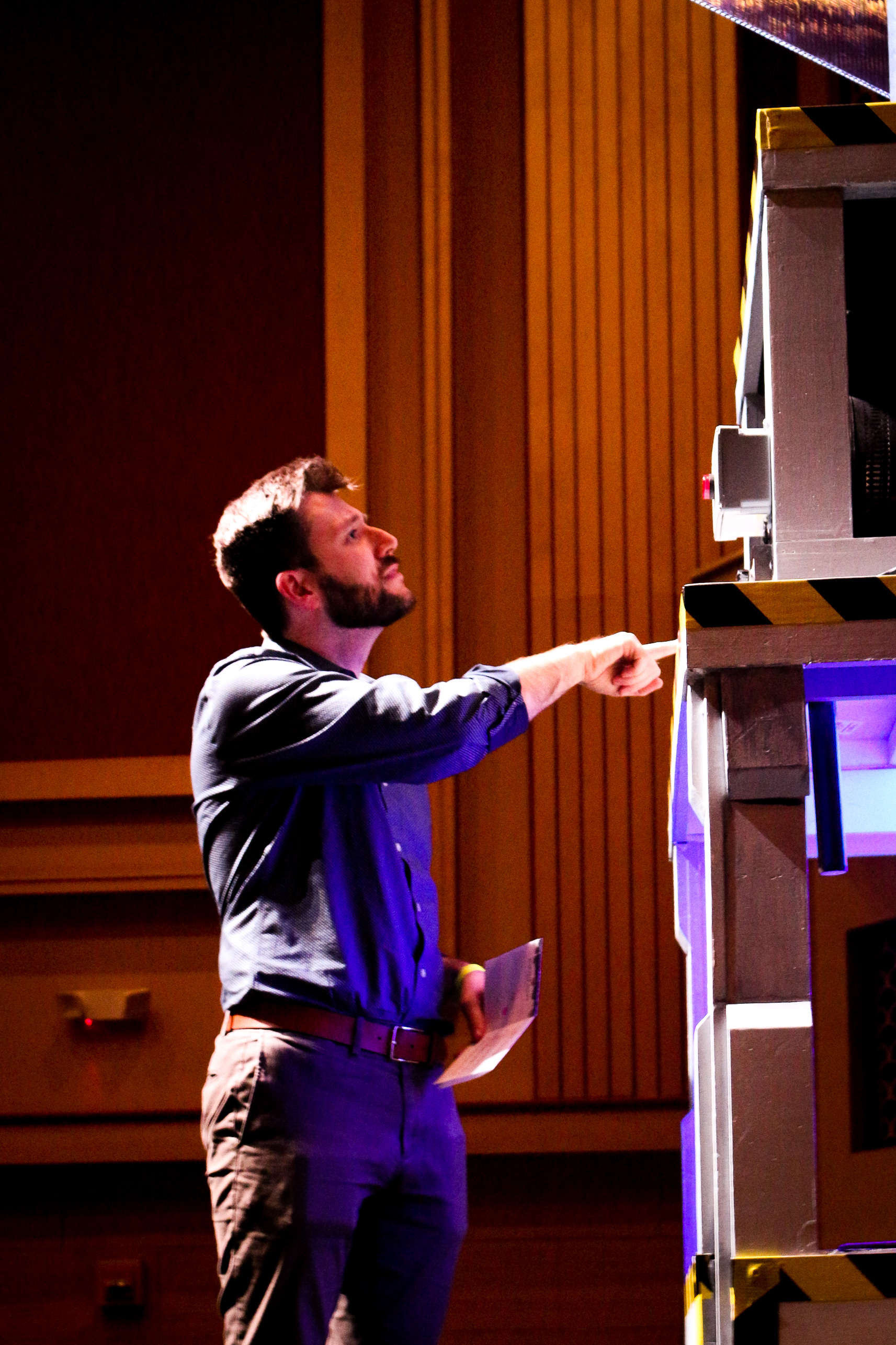 WHITE: Is this a show for everyone or does it require a special kind of theater goer?
WHITE: Is this a show for everyone or does it require a special kind of theater goer?
BRADBERRY: It does require a couple of things — you do have to walk, you do have to interact. Even if you’re not a big people person, there is a level of interaction that’s needed, but at the same time it’s a very safe environment for people.
LEDBETTER: Corey’s exactly right. I would say that the only real requirement that this show has that most theater doesn’t is that this is a truly active experience. Obviously you can take things in at your own pace, but to really get the most out of the show it’s all about engaging with the material and following whatever your brain leads you to.
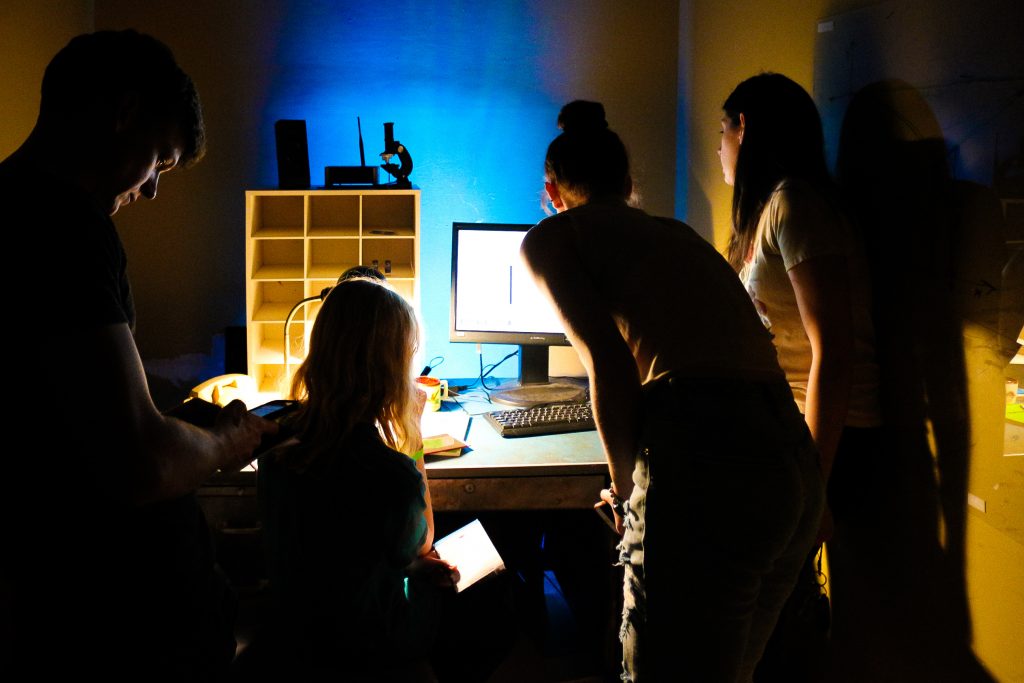
Murder! at The Strand II: Dark Matters | April 11-21, 2019
WHITE: Escape rooms are blowing up nationwide. Are there any concerns from either of you, that that may be a trend with a half-life, that there may be a bit of a bubble forming? Do you take that into consideration when working on a project like this?
BRADBERRY: Unlike a lot of escape rooms that are permanent installations, we’re only having to concern ourselves with what is going to be relevant to the people coming into The Strand from April 11th through April 21st. As for the long term, I think that what separates Murder! from escape rooms is the actor-audience relationship. That is the centerpiece of theater and the centerpiece of what makes Murder! so special.
LEDBETTER: Escape rooms have a half-life. There will come a time where escape rooms of lesser quality will fall away just like any trend. I think what we’re finding is that — and this goes back to what Corey said before — people are looking for experiences. If you craft something truly special and novel that speaks to people and makes them feel something, those are the experiences that are more likely to stick around after the bubble bursts. Beyond the trend of it, I do think we’ll continue to see permutations of interactive experiences that are intimate and personal, because that’s not a trend but a human desire.
“We’ll continue to see permutations of interactive experiences that are intimate and personal, because that’s not a trend but a human desire. “
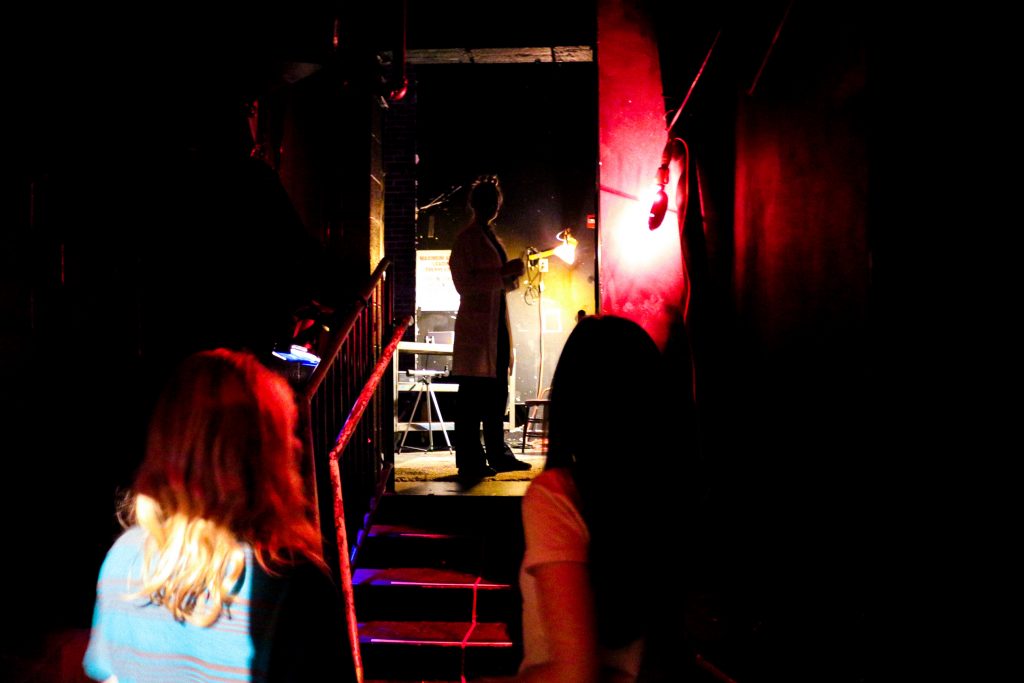
Murder! at The Strand II: Dark Matters | April 11-21, 2019
WHITE: Does this kind of audience interactivity have a place in more conventional theater? Is that something you would like to explore, a play more conventionally arranged but with this kind of audience interactivity or does that kind of fall under the guise of improv?
LEDBETTER: As an interactive story creator, I love the idea of that. I think theater would be a great medium for this. I think it would be cool to see a play where at the intermission you have this harrowing moment of ‘Do I make the characters commit to this,’ or ‘Do I have them commit to that?’ and see a branch there.
BRADBERRY: What I love about this is that it expands our notions of what theater can be but at the same time, there’s nothing about Murder! that you couldn’t see from so many other influences. Last year was very influenced by The Seagull, which is a one hundred year-old play about the search for new forms in theater, to the point where we even had characters that were speaking Chekov’s words. That’s how I see the blend of this experience melding with traditional theater. Finding ways to reinterpret older stories is a untapped field right now, and I think it’s a trend we’ll very much continue.
WHITE: This bring us to the end here — is there anything else you want people to know?
LEDBETTER: If the audience happened to see Murder! last year and liked the interactivity of it, this year we have more of that. This year, we get you into the experience almost immediately and it stays interactive until the very end of the show. Even our wrap up, which I guess you could say is closer to more traditional theater, it still has these beats of interactivity. I don’t want to ruin or spoil anything, but we do have this nice moment right in our ending where people are going to have the opportunity to affect the story based on the things they’ve learned, and I cannot wait to see how our audiences respond to that.
BRADBERRY: I must say, especially listening to Jeremy talk just now, there’s nothing else quite like Murder! at the Strand that I’ve seen in the theater world. There are things that it shares elements of but there is nothing quite like the experience that we’re crafting for this.
Our goal is to make this true to what this thing is: it is more immersive than a traditional play, it is more interactive that your traditional escape room, and vice versa. Our goal has always been to create the best possible experience for anyone who walks through the Strand’s doors.
The thrill of investigation, the live drama of a race against time, the insider-access of exploring the nooks and crannies of The Strand’s historic building for clues — these are things that make Murder! one of a kind. But the thing that makes it great? The same thing that makes for all great theatre, no matter the packaging.
A good story, well told.
+++
Murder! at The Strand II: Dark Matters runs for two weekends only April 11-21, 2019 at the Earl and Rachel Smith Strand Theatre. Tickets are available at strandmarietta.org.

